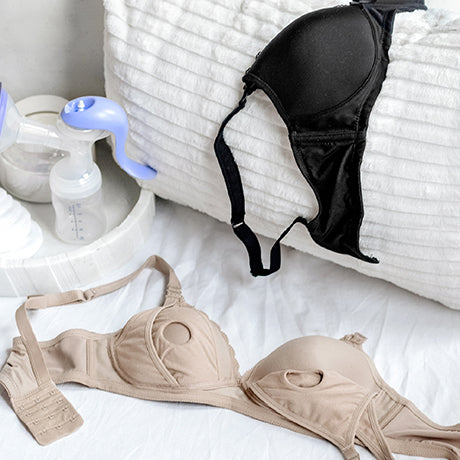How to Increase Milk Supply
It’s OK to be concerned about your milk supply as a new mom. After all, you’re sustaining an entire tiny human on just your breast milk. It’s only natural you’d be a bit obsessed with the topic. And you’re not alone. Many newbies fret over their breast milk and look for advice on how to increase milk supply. We’ve got the skinny on how to increase milk supply right here, right now:
Diagnosing Low Milk Supply
First things first – do you really have a milk supply issue? Maybe not. You may have experienced breast fullness and firmness during the first month or two of breastfeeding but over time your milk supply regulates and you produce what your baby needs at any given point in development. That means your milk supply will naturally ebb and flow as your baby enters growth spurts or has other developmental needs.
Breast softness, no longer leaking, not feeling let downs, and not being able to pump or hand express much milk are not signs that your milk supply is low. Also, if your baby is often fussy, nurses frequently, nurses for short amounts of time or takes a bottle after breastfeeding are not necessarily signs of low milk supply either. Your baby may be going through another issue that is completely unrelated or is just entering her fussy time of day, in which case nursing often will be very helpful to support her health and pacify her emotions.
The best ways to tell if your baby is getting enough milk is through consistent weight gain and regular wet and soiled diapers. Weight gain will vary but on average (after their first few days when they tend to lose weight) newborns gain 7.5 ounces per week, 3-6 month olds gain 4-5 ounces per week and 6-12 month olds gain 2.5 ounces per week. Breast milk is easily digestible, one of the many reasons it’s an excellent first food choice. That also means that for well-fed babies, wet diapers should be frequent (six or more a day) and poopy diapers should occur at least three to four times daily as a newborn. The consistency and frequency of poops will change as your milk matures and as you introduce solid foods.
Impediments to Milk Supply
Breast milk production is based on frequent stimulation and supply and demand. That means you have to nurse often to trigger the release of hormones that produce milk and breasts have to be empty to signal the need to make more milk. When you don’t nurse enough or drain your breasts completely (whether through nursing or pumping), you may encounter low milk supply. Supplementing can be a major reason for a decrease in milk supply because you are not allowing your baby to stimulate and drain your breasts. Plus, bottle feedings can create a preference for the easy and fast flow of milk through an artificial nipple.
Additionally, interrupting your baby’s natural tendencies to feed on demand, feed as long as she wants or feed on both breasts can cause low milk supply because, again, you’re not allowing the necessary process of stimulation and emptying the breasts to occur. Of course if your baby falls asleep during feedings she may not efficiently and effectively nurse. Other impediments to milk supply may include your health or diet such as being sick, taking medications, not drinking enough water, not eating enough calories and not getting enough sleep. In some cases babies are not able to successfully breastfeed due to latch issues which may simply be bad form or could be caused by lip or tongue ties. These issues can be addressed by a lactation consultant.
How to Increase Milk Supply
As you can guess, the best way to increase milk supply is to nurse often and to ensure your breasts are completely drained during feedings. If you’re questioning whether your baby is nursing efficiently and effectively, visit a lactation consultant. Allow your baby to nurse as long as she wants and whenever she wants on both breasts. Help your baby stimulate your breasts by switching sides several times during a feeding. Help your baby drain your breasts by compressing them during feedings. This not only helps you empty your breasts but can loosen fat globules from your milk ducts.
If you are still concerned about your milk supply, consider pumping after or between feedings. This can be especially helpful if your baby has recently stared sleeping for longer stretches at night. You can pump before you go to bed to increase your milk supply. Make sure you’re taking care of yourself and making your health, diet and sleep a priority. Nursing is tough work and can take a toll on your body – when it does, it may put your milk supply in jeopardy. Also consider taking a galactogogue such as lactation tea, lactation cookies/bars, oatmeal, fenugreek or other herbal supplement to increase milk supply.
Sources: BabyCenter, KellyMom, Parents Magazine, LaLecheLeague, Today’s Parent, Kids Health and Healthy Children
Leading Lady’s All About Breastfeeding blog series serves to educate and inspire new moms with information on a range of breastfeeding topics during the month of August in honor of World Breastfeeding Week and National Breastfeeding Month. This resource guide of helpful tips, breastfeeding advice, and research-based information supports our mission to raise awareness for breastfeeding and motivate moms on their breastfeeding journey.
The post How to Increase Milk Supply appeared first on Leading Lady.






